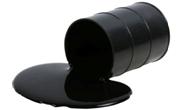Market Data

July 15, 2017
Energy Prices, Rotary Rig Counts for July 2017
Written by Peter Wright
Since our last report, the price of crude oil has continued to decline and the price of natural gas has been stable. The number of operating rigs exploring for both oil and gas has continued to increase. The prices of oil and natural gas drive the consumption of energy-related steel products including oil country tubular goods, pipe fittings and well head equipment, among others. A significant volume of hot rolled coil is used to make welded tubular goods.
On July 13, HiddenValueInvestor wrote: “A surge in exports of oil and finished petroleum products could send West Texas Intermediate crude oil prices back over $50 per barrel before the end of the year.” A recent New York Times article highlighted the new oil export terminal in Corpus Christi, Texas. According to the paper, “Suddenly buyers from all over the world are purchasing the new American supplies, from South Korea to India–even oil-rich Venezuela, which uses the light sweet crude that comes out of American shale to blend with its gooey heavy crude. The light crude is highly prized, even while global oil markets are saturated.” Light sweet crude oil has less sulfur than sour oils, and takes less time and is easier to refine than heavy oils. The lighter and sweeter the better. Some of the lightest and sweetest oil in the world is West Texas Intermediate. It is not clear how much ultimate demand there will be globally for West Texas Intermediate oil. That is because Congress only passed a bill in December 2015 to lift the 40-year ban on crude oil exports. The first shipments did not start until January 2016. The country has only been building export infrastructure and soliciting customers for one and half years. But those efforts are rapidly producing fruit.
Figure 1 shows historical oil and gas prices since January 2000. On June 6 last year, the daily spot price of West Texas Intermediate (WTI) rose through $50 for the first time since June 21, 2015.
Since June 2016, the price has ranged between a low of $40.05 in August last year and a high of $54.00 in February this year. WTI spot on July 10 was $44.40, down from $46.10 in our June 18 report. The price of oil has gone nowhere in over a year. Our price data comes from the Energy Information Administration (EIA). Weekly U.S. stocks of crude oil, excluding the strategic petroleum reserve, declined for 12 of the last 14 weeks. This is the normal seasonal decline. Stocks on July 7 were 4,178,000 barrels higher than at the same time last year and are well above the historical norm (Figure 2).
The price of natural gas at the Henry Hub in Louisiana on July 7 was $2.95/1,000 cu. ft. This was three cents lower than in our last update. The EIA April 2017 Short-Term Energy Outlook expects that electricity generation fueled by natural gas this summer (June, July, and August) will be lower than last summer, but it will continue to exceed that of any other fuel, including coal-fired generation, for the third summer in a row. The projected share of total U.S. generation for natural gas is expected to average 34 percent, which is down from 37 percent last summer but still exceeds coal’s generation share of 32 percent.
The total number of operating rigs in the U.S. on July 14 was 952, which was an increase from 927 in our last report. The number of operating rigs has risen steadily since its low point of 404 on June 27 2016. The oil rig count had a low point of 316 also on June 27 last year and has since risen to 765 on July 14. The U.S. gas rig count has risen from its low point of 81 on August 5 last year to 187 on July 14 this year. The year/year growth rate of U.S. plus Canadian total rigs was 111.7 percent in the latest data. Figure 3 shows the Baker Hughes U.S. Rotary Rig Counts for oil and gas equipment in the U.S. (explanation below).
On a regional basis in the U.S., the big three states for operating rigs are Texas, Oklahoma and North Dakota. Figure 4 shows the land rig count in those states since 2000 and that non-conventional drilling in North Dakota was down by 75 percent from its heyday in late 2014.
This is not as bad as it sounds because previously drilled and capped wells are being put back on stream. The Dakota Access Pipeline is open for business. Bakken oil producers now have the ability to ship 520,000 barrels per day by pipeline rather than by rail to the hub near Patoka, Ill., where refiners in the Midwest can access the crude. An additional option is to ship to the hub near Nederland, Texas.
Baker Hughes rotary rig count: This is a weekly census of the number of drilling rigs actively exploring for or developing oil or natural gas in the United States. Rigs are considered active from the time they break ground until the time they reach their target depth. The Baker Hughes Rotary Rig count includes only those rigs that are significant consumers of oilfield services and supplies.











